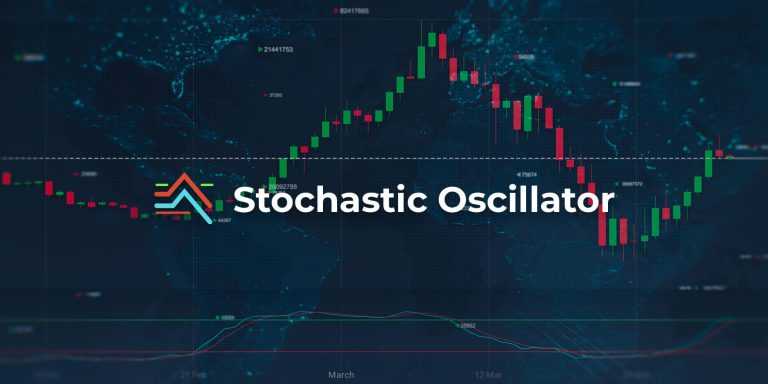The Stochastic Oscillator is a momentum-type indicator that determines overbought and oversold positions. In other words, it can provide a trader with information on when they could possibly enter or leave the market. The indicator is also used to predict future performance of the underlying asset. It was created and introduced by George C. Lane in the 1950s.
How does Stochastic Oscillator work?
According to Lane himself, “The indicator doesn’t follow price, it doesn’t follow volume or anything like that. It follows the speed or the momentum of price. As a rule, the momentum changes direction before price. This indicator, therefore, can help traders predict trend reversal points, which is always of great importance in trading”.
The Stochastic Oscillator returns the ratio between the last closing price and the high-low range during a set period of time. It is based on the premise that during the uptrends, prices will be above the previous period closing price. Alternatively, during the downtrends, prices will likely be below the previous closing price.
The oscillator consists of two horizontal and two moving average lines (the fast and the slow ones). The fast moving average line by default has a period of 3, while the slow MA has a period of 13. The oscillator ranges from 0 to 100. Both levels, by default set at 20% and 80% respectively, coincide with two horizontal lines.
☝️
It should be noted, however, that the decrease in prices is not necessarily a signal to buy, as securities can remain in the oversold zone for quite some time without leaving it. Similarly, an upward price rally does not always indicate an urge to open a “Buy” position. Securities can remain overbought for relatively long periods of time during a strong uptrend.
How to set up the Stochastic Oscillator?
Setting up the Stochastic Oscillator indicator in the IQ Option platform is easy.
- Click on the “Indicators” button in the bottom left corner of the trade room. Go to the “Popular” tab and the Stochastic Oscillator from the list of available options.
- Go to the “Set up & Apply” tab and, if you want to use the indicator with standard parameters, simply click on the Apply button.
Or you can adjust the indicator to your liking, changing %K and %D periods and levels for higher accuracy (alternatively, more signals).
The indicator will appear in the bottom part of the screen, right below the price chart.
How to use it in trading?
The indicator’s main purpose is to reveal the overbought and oversold levels and give traders a hint on when to open a position. There are several ways to determine such cases with the help of the Stochastic Oscillator, of which the following two are the most commonly used.
1. Overbought and oversold levels
Sell signals
When both slow and fast moving averages are above the overbought level, the trend might be expected to become bearish. The fast MA crossing below the slow MA might be an additional signal of an upcoming downtrend.
Buy signals
When both slow and fast moving averages are below the oversold level, the trend might be expected to turn bullish. The fast MA crossing above the slow MA might become an additional signal of an upcoming uptrend.
2. Divergence
When the indicator and the price action start moving in different directions, it might be perceived as a signal of an upcoming trend reversal. Divergences might be both bullish and bearish, as well.
It should be noted, however, that as any other technical analysis tool, the Stochastic oscillator cannot be expected to provide accurate signals 100% of the time. From time to time it can — and will — provide false signals that should not be used as an invitation to open a corresponding position.
Conclusion
The Stochastic Oscillator is a useful and interesting technical analysis tool. For maximum efficiency, it can be combined with other momentum indicators and trend-following indicators. Caution may be needed when working with the indicator, as different levels do not necessarily correspond to an upcoming trend reversal.

